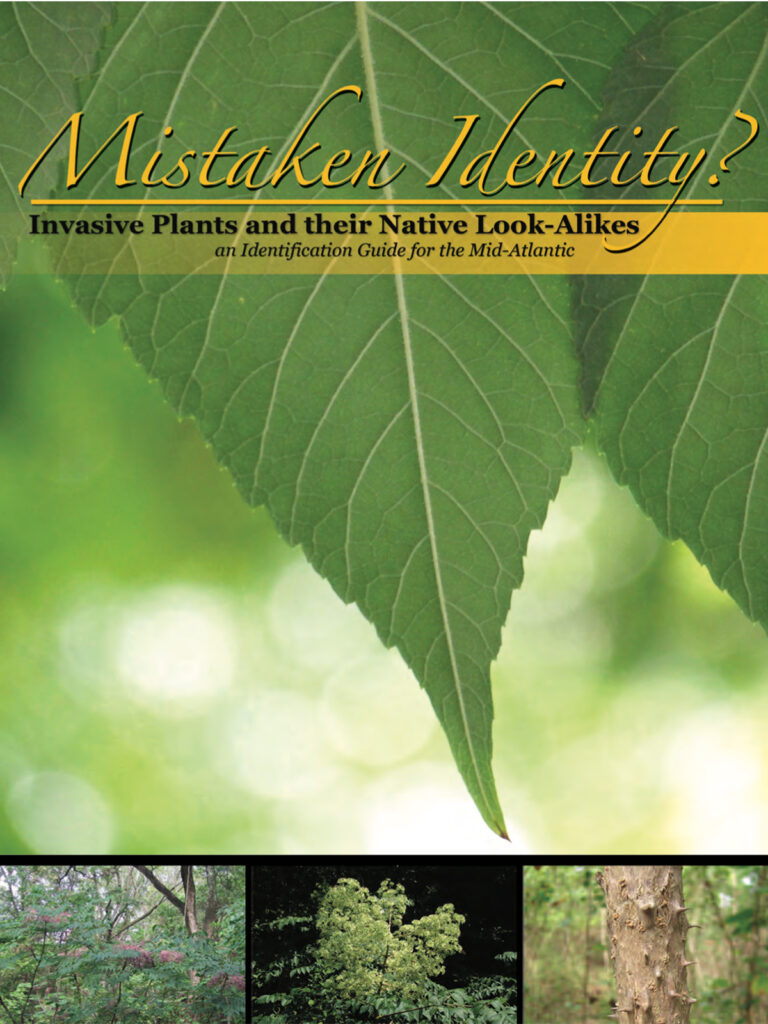When we were first learning about habitat gardening — and it sounds strange now — we didn’t think that much about the plants beyond the fact that they provided some berries, nectar, or something else wildlife could use and that they would grow here in CNY.
As we began to understand more about the importance of native plants and the important of NOT growing invasive plants, we became more particular, but it was hard to find out which were native, which were invasive, and which ones were most beneficial. (Resources on invasive plants are below.)
For the first years we were creating our habitat garden, there were remarkably few resources to learn about what would be appropriate here in Central New York. Since then, new ones have appeared, and I’ve learned to adapt other resources from nearby ecoregions to find out which plants would also be appropriate here.
Here are plant books we’ve used, but there’s good information on the web, too. See the sites listed below.
Native plant information
- The Biota of North America Program (BONAP): Provides state- or county-level maps of the distribution of a huge number of plants throughout the country, color-coded as to native or non-native. Our HGCNY Wild Ones chapter uses this as our reference for finding Northeast native plants.
- The Chesapeake Bay Native Plant Center is an excellent resource. And you can download the free Native Plants for Wildlife Habitat and Conservation Landscaping booklet (originally a hard-copy booklet). It packs in a lot of information about native plants, is very well-organized, and is easy to use. It’s especially useful since it indicates plants’ specific value for various creatures. Even though it targets the Chesapeake Bay watershed, we’re surprisingly close to this watershed (it ends around Cortland, which is just a few miles south of Syracuse), and many of the plants are native here in CNY, too. And with the changing climate, many of these plants may become even more suitable for our area.
- The New York Flora Association Atlas lists ALL plants found in NYS — both native and non-native. It’s useful to know what plants grow here, BUT it means that to find out if a plant is native here, we CHOOSE “YES” IN THE NATIVE PLANT column on the chart.
- Guide to the Finger Lakes Plant Communities — This is an entire book provided free on the web. A wonderful resource for our area!
- Lady Bird Johnson’s Wildflower Center is a wealth of information for native plants anywhere in the country. It also has plant recommendations for various regions, such as the Northeast Region to find the native plants they recommend for our area.
- The Connecticut Botanical Society has very nice descriptions of native plants. Most of the plants that would be native in Connecticut would be native here (at least it’s close enough for my standards!)
- Finger Lakes Native Plant Society has a nice Native Plant of the Month feature (look in left hand menu), which is especially useful since they’re actually CNY natives.
Invasive plant information
It’s good to know how to identify the invasive plants, too. These also suggest some native alternatives that fulfill similar landscape functions.
U.S. Fish and Wildlife Service: Plant Invaders of the Mid-Atlantic Natural Areas—Suggests native alternatives to invasive plants. Now on its 4th edition.

NRCS and Delaware Dept. of Agriculture: Mistaken Identity? Invasive Plants and Their Native Look-alikes: An Identification Guide for the Mid-Atlantic – Extremely important resource! You don’t want to be eliminating a fine native plant that happens to look like an invasive plant or vice-versa.
